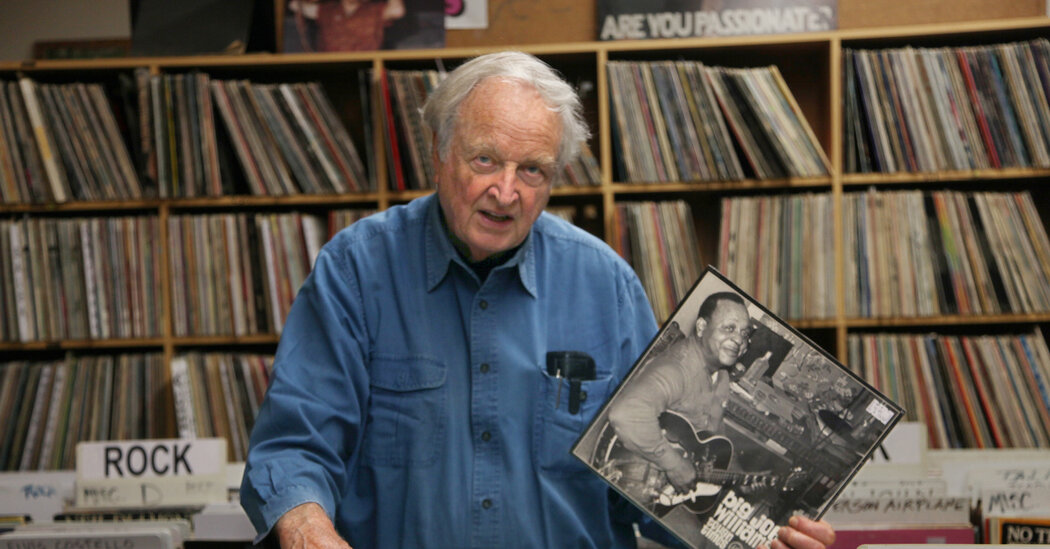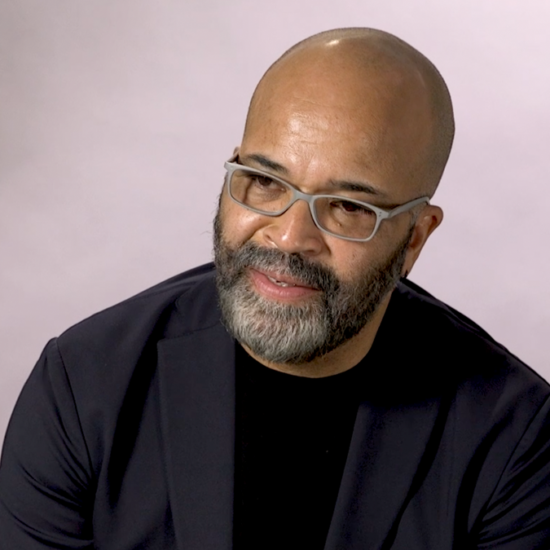
Chris Strachwitz, who traveled in search of the roots of American music with the eagerness of a pilgrim, discovered traditional musicians with the skill of a detective, promoted their careers with the zeal of an ideologue and guarded their work with the care of a historian, died on Friday in San Rafael, Calif. He was 91.
His death, at an assisted living facility, was caused by congestive heart failure, his brother, Hubert, said.
Mr. Strachwitz (pronounced STRACK-wits) specialized in music passed down over generations — cotton-field music, orange-orchard music, mountain music, bayou music, barroom music, porch music — stemming not only from before the music industry era but even from before the rise of mass culture.
Like other leading musical folklorists of the modern recording era — among them Moses Asch, Alan Lomax and Harry Smith — Mr. Strachwitz rescued parts of that history before they vanished.
But the extent of his devotion and the idiosyncrasy of his passions defy comparison.
Mr. Strachwitz was the founder of Arhoolie Records (the name comes from a term for field hollers). In addition to recruiting his own artists, he did his own field recordings, music editing, production, liner notes, advertising and sales. In the company’s early years, he affixed the labels to the records and mailed them himself.
He was a lifelong bachelor who said that having a family would have thwarted his career. On his journeys around the country to record new music, he had for company a manually operated orange juicer and 20-pound bags of oranges. The targets of his search included a highway grass cutter, a gravedigger and a janitor, all of whose musical talents were basically unknown at the time.
He immigrated from Germany after growing up as a teenage count under Nazi rule and went on to explore the fullest reaches of American pluralism. He took an interest not just in the standard roots repertory of folk and blues, but also in norteño, Cajun, zydeco, klezmer, Hawaiian steel guitar, Ukrainian fiddle, Czech polka and Irish dance music, among countless other genres.
To account for what united his passions, Mr. Strachwitz said he liked music that was “pure,” “hard-core” and “old-timey,” particularly if a musician had a “spark.” His language grew more colorful when he defined his type of music negatively.
“It ain’t wimpy, that’s for sure,” he said in a 2014 documentary film about him. The movie took its title from Mr. Strachwitz’s ultimate insult, which he used to refer to anything that he considered commercial, artificial and soulless: “This Ain’t No Mouse Music!”
The first Arhoolie record, released in 1960, was “Texas Sharecropper and Songster,” by the blues singer Mance Lipscomb. Mr. Lipscomb’s music had never been recorded, and the new release vaulted him into prominence during the 1960s folk revival. Mr. Strachwitz went on to help revive the careers of other blues singers, including Lightnin’ Hopkins, Mississippi Fred McDowell and Big Mama Thornton.
As both a record executive and a record collector, he made a particularly profound historical contribution to norteño, music from the Texas-Mexico border. The Smithsonian Institution last year called his archive of Mexican and Mexican American music “the largest collection of commercially produced vernacular recordings of its kind in existence,” noting that it contained many records that are “irreplaceable.”
It was the result of about 60 years of collecting (though Mr. Strachwitz never learned to speak Spanish). Norteño musicians nicknamed him El Fanático.
He might have been considered a preservationist, but he also shaped the worlds that he documented. That was especially true of his recordings of Cajun musicians. In 2000, the rock historian Ed Ward wrote in The New York Times that Mr. Strachwitz “helped prod the culture into what is now a full-blown renaissance.”
Perhaps his most notable discovery in Louisiana was the singer and accordionist Clifton Chenier, who came to be regarded as the leading exponent of the mix of rhythm and blues, soul and Cajun music known as zydeco. During a visit to the New Orleans Jazz and Heritage Festival as an older man, Mr. Chenier discussed his frustrations with the record industry.
“They wanted you to do what they wanted you to do, and I didn’t like that,” Mr. Chenier said. “Then I met Chris.”
Mainstream musicians also saw something exceptional in Mr. Strachwitz. In a 2010 profile of him in The Times, the guitarist Ry Cooder said that Arhoolie’s second release, “Tough Times,” an LP by the blues musician Big Joe Williams, “started me on a path of living, the path I am still on.”
Christian Alexander Maria Strachwitz was born on July 1, 1931, in Berlin. He grew up on a country estate called Gross Reichenau in what was then the Lower Silesia region of Germany. (It is now a village called Bogaczow in southwest Poland.) His father, Alexander Graf Strachwitz, and his mother, Friederike (von Bredow) Strachwitz, ran a vegetable and grain farm of a couple hundred acres. The men of the family had the royal title of count.
The family lived in a manor built during the time of Frederick the Great, the king of Prussia. The Nazis appointed Chris’s father a local game warden, and during World War II he joined the military and attained the rank of captain, though Hubert Strachwitz said his service was limited to escorting troop transports bound for Italy. On the family’s bucolic ancestral property, the war seemed far away to young Chris.
That changed in February 1945. The family fled as the Russians invaded the estate. Chris and two of his sisters had left shortly beforehand on a train; his father escaped in a horse and buggy; Hubert, Chris’s other two sisters and his mother left on a tractor-trailer. Thanks to a wealthy relative in the United States, the family was able to reunite in Reno, Nev., by 1947.
Chris served in the U.S. Army from 1954 to 1956. Soon after being honorably discharged, he graduated from the University of California, Berkeley, with a bachelor’s degree in political science. He taught high school German in the suburbs of San Jose for several years.
In his free time, Mr. Strachwitz collected records, and he developed a particular interest in Lightnin’ Hopkins, whom he struggled to learn more about. There was no public information about whether Mr. Hopkins was even still alive.
In 1959, a fellow music enthusiast told Mr. Strachwitz that he had found Mr. Hopkins in Houston. When the school year ended, Mr. Strachwitz went on a road trip.
He later recalled that he found Mr. Hopkins playing in “a little beer joint,” improvising songs in a conversational style, telling a woman in the crowd to quiet down, wondering in song about the man from California who had traveled all the way to Texas “to hear poor Lightnin’ sing.”
Mr. Strachwitz believed that nobody had ever recorded a scene like that live. Following a tip from one of Mr. Hopkins’s songs, he returned to Texas the next year and found Mr. Lipscomb. This time, he brought a recorder.
Meeting musicians where they lived and recording them where they liked to play, rather than in a studio, became Mr. Strachwitz’s signature style.
He found unexpected commercial success when Country Joe and the Fish performed their “I-Feel-Like-I’m-Fixin’-to-Die Rag” at the Woodstock music festival in 1969. Joe McDonald, the band’s lead singer and principal songwriter, had used Mr. Strachwitz’s equipment to record the song in 1965 and given him publishing rights in exchange. With his share of the royalties, Mr. Strachwitz put a down payment on a building in El Cerrito, Calif., near Berkeley. It became the home of Arhoolie and a record outlet he called the Down Home Music Store.
Aside from recording music, he drew attention to the artists he loved by collaborating with the filmmaker Les Blank on several music documentaries.
As the record industry declined, Mr. Strachwitz focused on a nonprofit arm of Arhoolie that digitizes and exhibits his singular record collection. In 2016, Smithsonian Folkways Recordings, the nonprofit label of the Smithsonian Institution, acquired the Arhoolie catalog.
In addition to his brother, Mr. Strachwitz is survived by three sisters, Rosy Schlueter, Barbara Steward and Frances Strachwitz.
There was one word Mr. Strachwitz often used to describe success in his field. When he found an aged master of traditional music playing a song at a resonant time and place, he called it, as if he were hunting butterflies, a “catch.”













